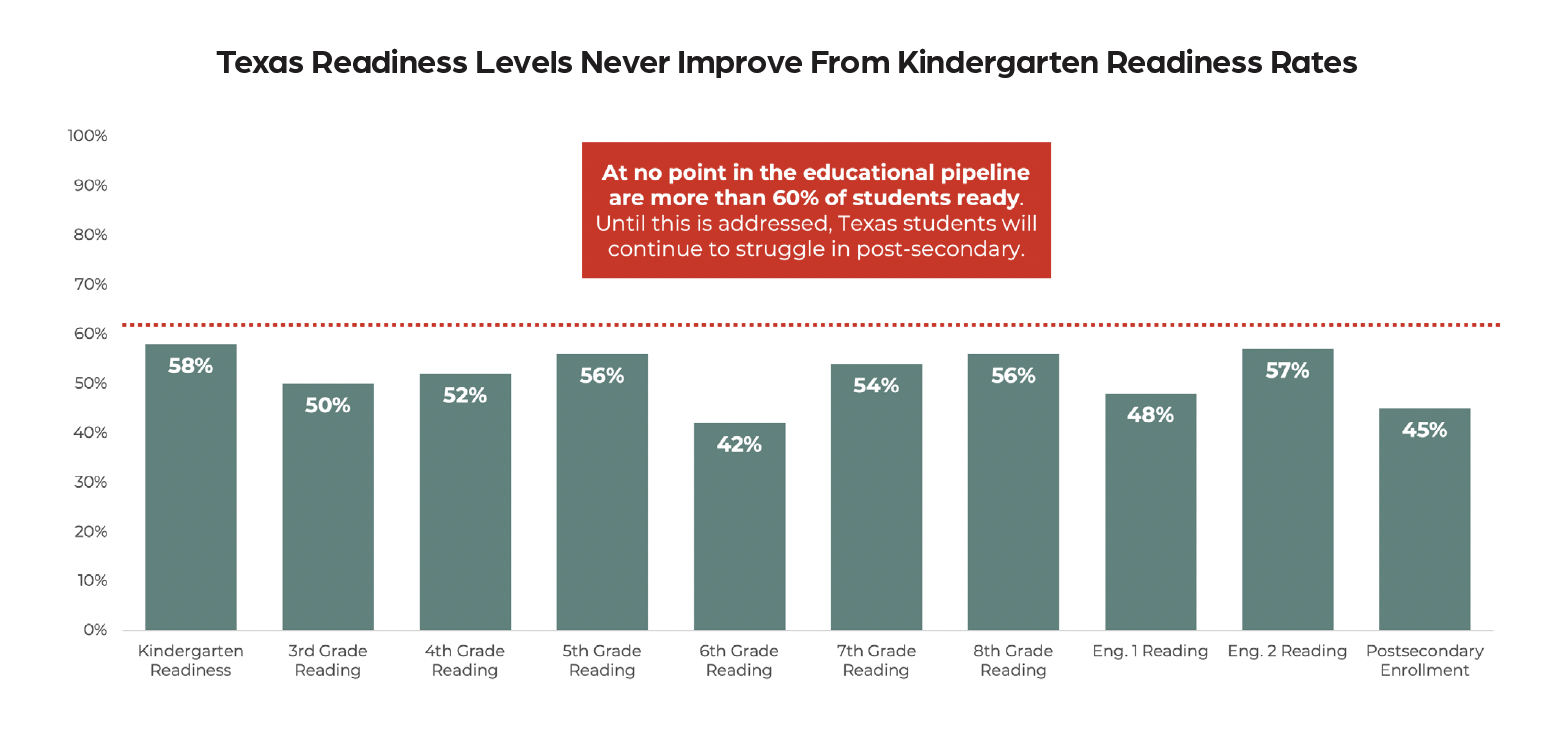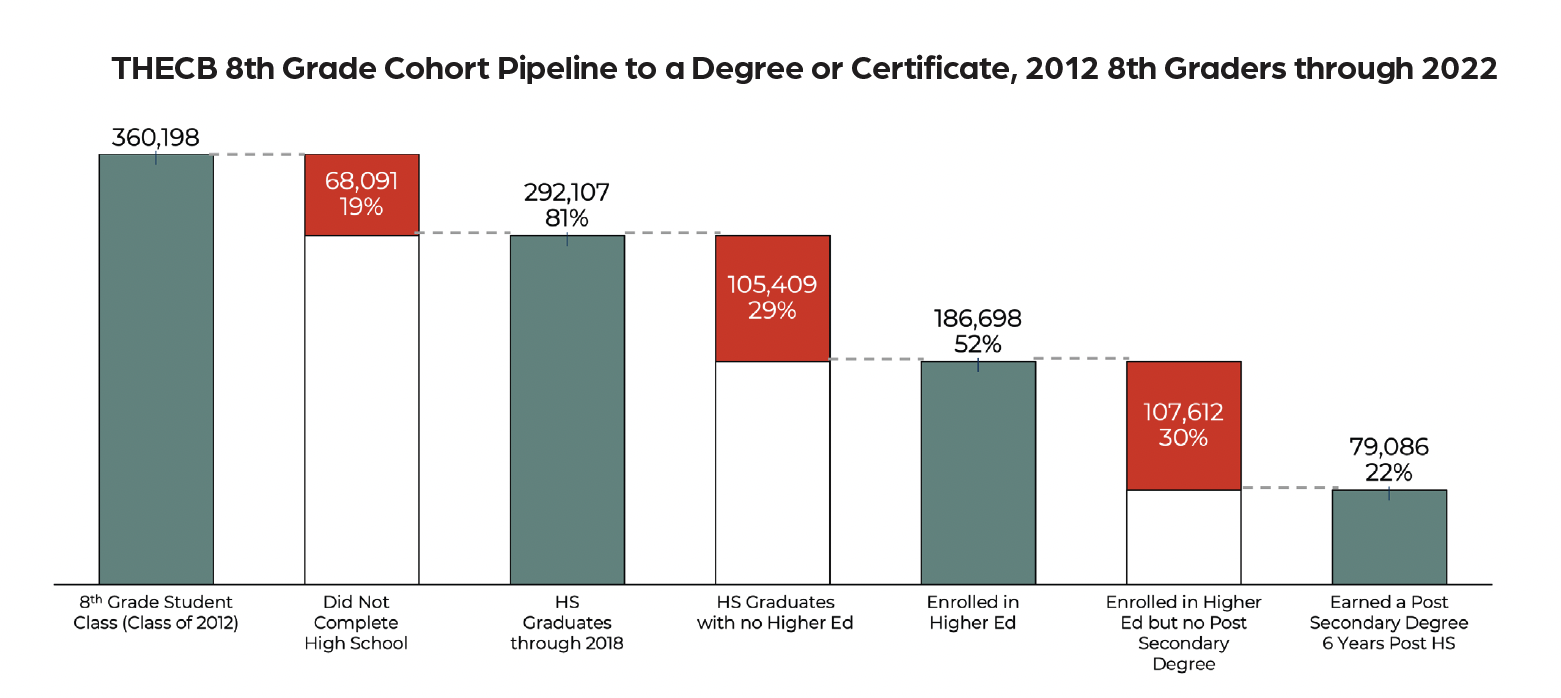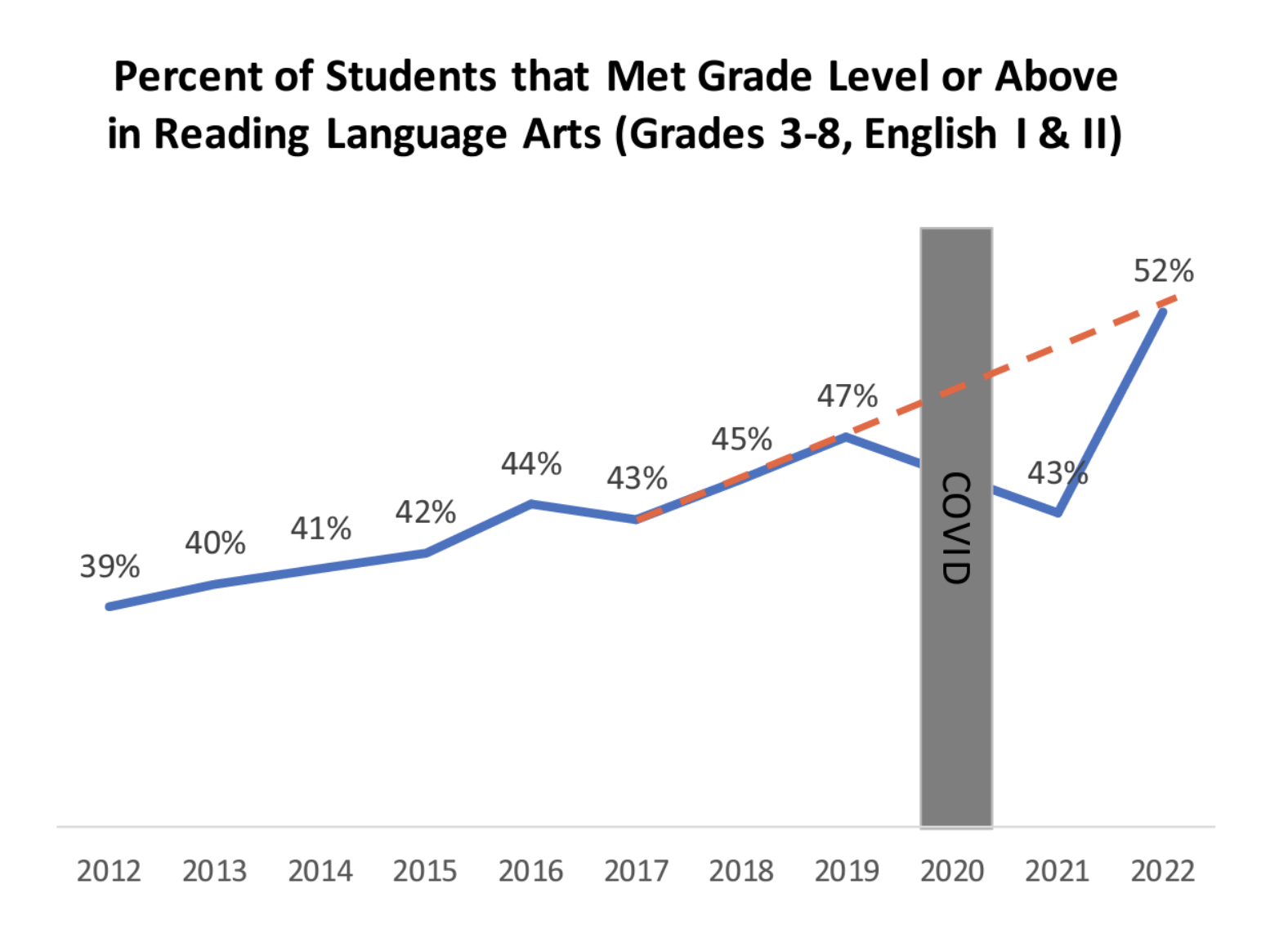What outcomes can we expect for the graduating class of 2036?
As families across Texas get ready to head back to school, our state is reaching an important population milestone: Students entering kindergarten this fall will graduate high school in 2036, our state’s bicentennial.
If history is an indicator, what can we expect the academic outcomes of these “bicentennials” to be?

Texas 2036 took a look at the historical readiness levels of different age groups in our public school system in a report we released with the Bush Institute, The State of Readiness: Are Texas Students Prepared for Life After High School.
In examining the data, we found that at no point are more than 60% of Texas students ready for the next grade. The highest readiness rate of any measured grade level is kindergarten readiness at 58%.
(Readiness was measured using assessments. These include the Kindergarten Readiness measurements and the most recent STAAR annual results.)
This means that there has historically been limited success at remediating students at any level in our educational pipeline. Data from TEA confirms this, with only 4% of students who failed their STAAR exam getting on grade level within two years. Recent legislation, like House Bill 1416 (88-R) and HB 1605 (88-R), seek to address this historical challenge by providing data-informed tutoring to students that are not on grade level and ensuring every student has access to high-quality curriculum.
Texas’s bicentennials are entering into an education system that has received substantial investment and overhaul in order to ensure greater academic attainment and postsecondary outcomes than the students that have come before them.
As it stands today, only 22% of eighth graders in Texas receive some type of postsecondary credential within six years of high school graduation.
 While these numbers are concerning, there is good reason to hope these trends will be improved by the time the bicentennials graduate.
While these numbers are concerning, there is good reason to hope these trends will be improved by the time the bicentennials graduate.
 Recent investments like HB 3 (86-R) and HB 8 (88-R) provide increased funding for Texas’ K-16 system and a significant portion of this funding is outcomes based. The investment and programmatic changes in HB 3’s 2019 school finance overhaul have already yielded positive results. The elementary literacy interventions in the bill have likely caused the improvement in STAAR scores recently, with the highest reading scores since the exam began (see chart).
Recent investments like HB 3 (86-R) and HB 8 (88-R) provide increased funding for Texas’ K-16 system and a significant portion of this funding is outcomes based. The investment and programmatic changes in HB 3’s 2019 school finance overhaul have already yielded positive results. The elementary literacy interventions in the bill have likely caused the improvement in STAAR scores recently, with the highest reading scores since the exam began (see chart).
In order for the bicentennials to graduate ready for life in 2036, we must continue to make strategic investments in education and workforce programs to increase the number of students equipped for life after high school — like those found in HB 3 and HB 8. The Class of 2036 deserves an education system that graduates them ready for college or a career. With strategic changes and a commitment to improving student outcomes, Texas can make that goal a reality.
Read more:
Love this blog? Support our work.
